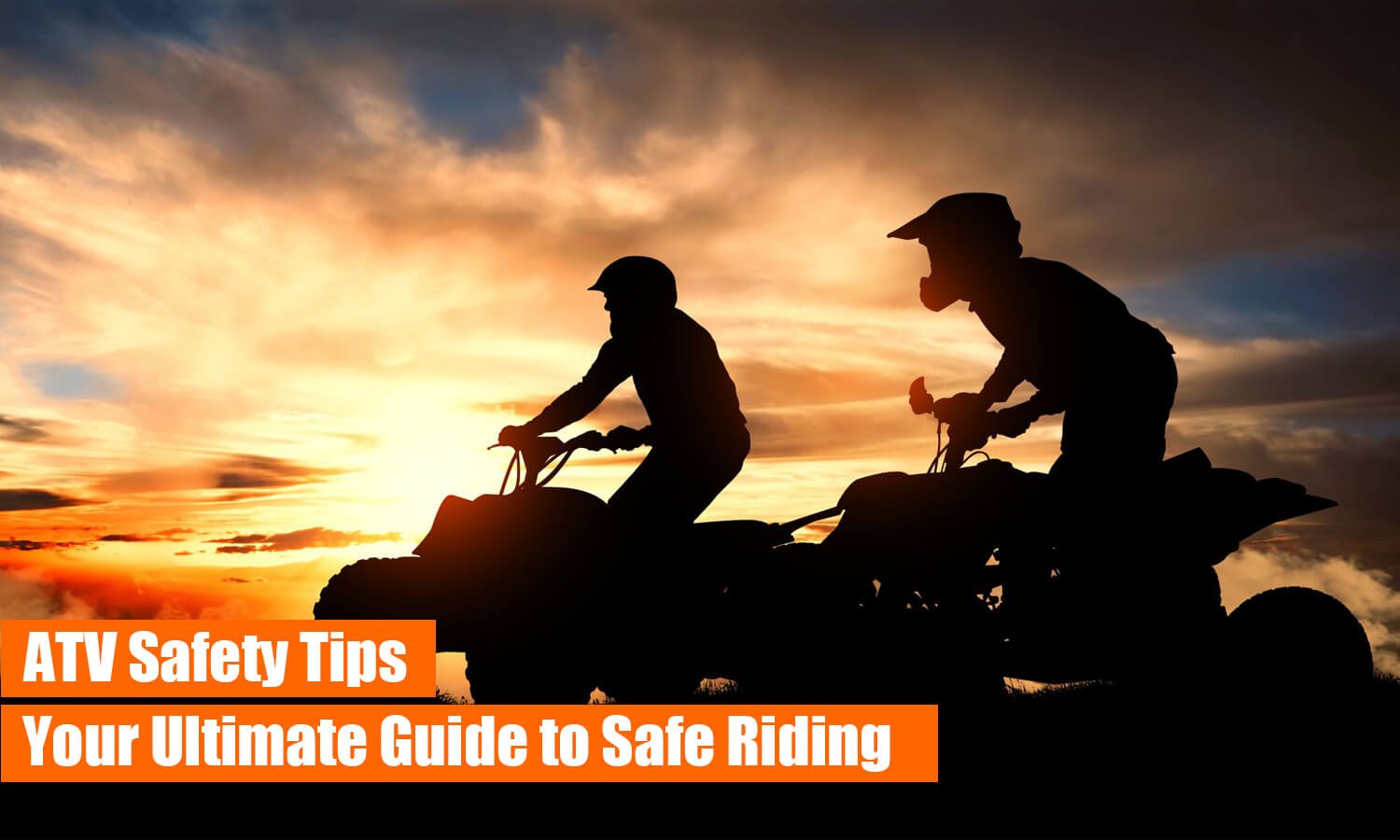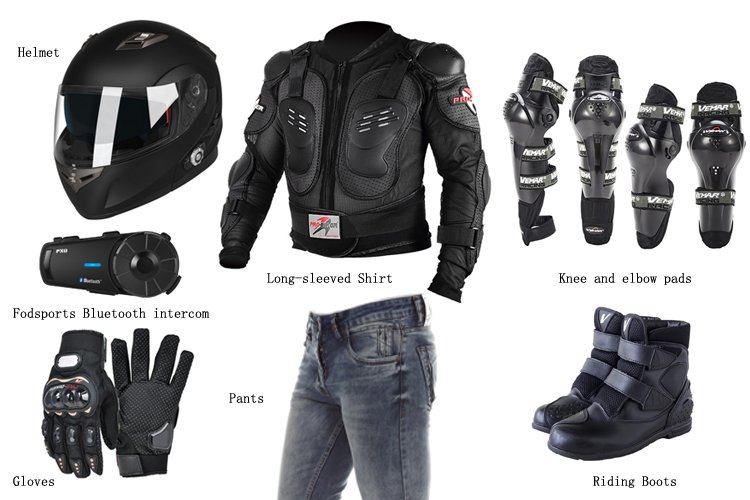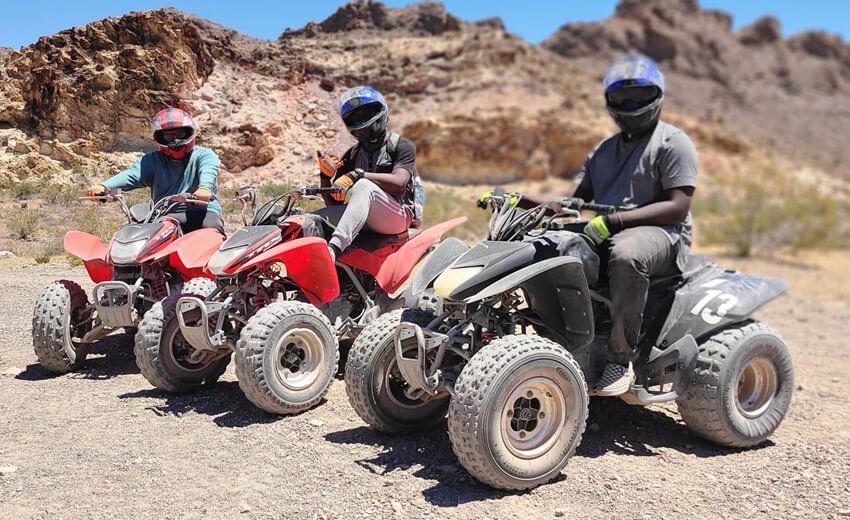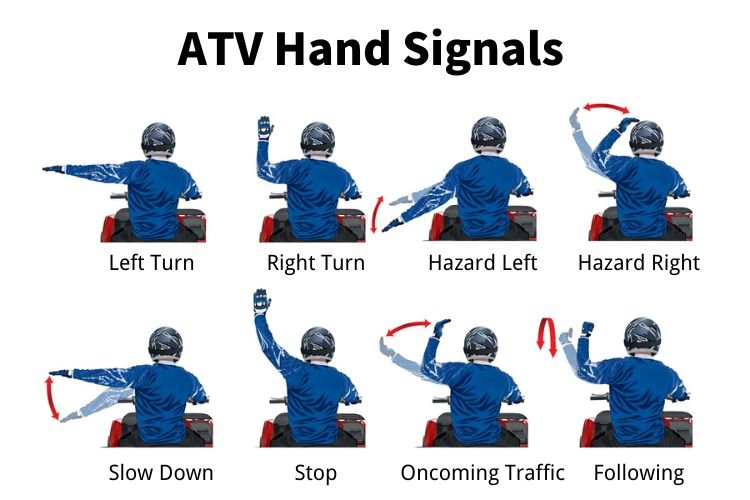Getting your snowmobile’s track adjusted correctly doesn’t have to be complicated. In this guide, we’ll show you the tools, step-by-step instructions, and troubleshooting tips for all major brands — Polaris, Ski‑Doo/Lynx, Arctic Cat, Yamaha, and more. If you do it right, your snowmobile will run great quickly. Why Track Tension Matters Track tension directly affects […]

ATV Safety Tips: Your Ultimate Guide to Safe Riding in 2024
Do you know the essential ATV safety tips? How to ride an ATV safely?
Table of Contents
Introduction
All-Terrain Vehicles (ATVs) provide exciting off-road experiences, perfect for adventure enthusiasts. However, safety should always be a top priority due to the inherent risks involved.
This comprehensive guide will cover the most important ATV safety tips for all ATV riders. With these tips, you can have a secure and enjoyable ATV ride.
We will introduce them in detail so that both beginners and experienced riders can keep in mind.
16 Most Essential ATV Safety Tips
1. Wear Proper Gear

ATV riding gears - ATV safety tips
Your first line of defense is the right protective gear. A DOT-compliant helmet is crucial to protect your head from serious injuries.
Besides, you should pair with gloves, boots, long sleeves, goggles, and helmet communication systems. Because each piece of these gear serves a specific purpose.
For example, the gloves improve grip and protect hands, boots prevent foot injuries. The goggles shield your eyes from debris, while the helmet intercom assures you to contact your partners.
Shop Fodsports ATV Helemt Intercoms
2. Get Trained

ATV safety train course
Before hitting the trails, consider taking an ATV safety course if necessary.
These courses teach fundamental skills like navigating obstacles, controlling the vehicle, and others.
What's more, you should also have some basic knowledge about handling emergency situations.
Training builds confidence and reduces the likelihood of accidents. Do not ignore this, it is invaluable for all riders.
3. Inspect Your ATV
Before each ride, conduct a thorough inspection of your ATV.
Check the brakes, throttle, lights, and tire pressure. Make sure there are no loose parts or leaks.
Besides, regular maintenance of your ATV is also essential. This can not only extends the life of your ATV. It is also the one of the best tips to ensure your safety by preventing unexpected breakdowns on the trail.
4. Know Your Limits
Be honest about your skill level and ride within your capabilities. Choose trails that match your experience.
As you gain confidence and skills, gradually tackle more challenging terrain.
Remember, pushing beyond your limits can lead to accidents and injuries.
5. Avoid Paved Roads
ATVs are designed for off-road use. Riding on paved roads increases the risk of collisions with cars and other vehicles.
If you must cross a road, do so at a safe, designated crossing point. And most importantly, ensure visibility to oncoming traffic.
6. Never Ride Alone

riding ATV in a group - ATV riding safety method
Riding with a buddy enhances safety. In case of an accident or mechanical issue, having someone with you ensures help is readily available.
Remember to take helmet intercom system with you and your partners. It will bring you more safely, efficient and convenient communication during the trip.
Moreover, always inform someone about your riding plans and estimated return time.
7. Don’t Ride Under the Influence
Operating an ATV requires full attention and quick reflexes. Never ride an ATV if you are under the influence.
Alcohol and drugs impair your ability to make sound decisions and react swiftly. Stay sober to ensure a safe and enjoyable ride.
8. Use Appropriate Speed
Speed thrills but also kills. Always adjust your speed to match the trail conditions and your comfort level.
On unfamiliar or rugged terrain, slow down to maintain control and avoid accidents.
Additionally, never overspend. This is not only responsible for your safety but also for the other participants on the road.
9. Be Aware of Surroundings
Stay alert to your environment at all times.
Watch out for obstacles like rocks, branches, and uneven terrain. Besides, be mindful of other riders and wildlife.
Anticipating potential hazards helps prevent accidents.
10. Respect the Environment
Stick to designated trails to preserve natural habitats and prevent trail closures.
And, avoid cutting through fields or forests, which can damage ecosystems and endanger wildlife.
11. Start Slow
If you are a beginner rider, you should start on easy, flat trails to build confidence.
As your skills improve, you can try to gradually tackle more challenging terrain
Patience and practice are key to becoming a proficient rider.
12. Practice Emergency Stops
You should also learn how to perform quick stops safely. Since you do not know when and where there will be an emergency which you need to stop suddenly.
You can practice to master this essential skill in a controlled environment. Knowing how to stop suddenly can prevent collisions and accidents.
13. Adjust to Conditions
Weather and trail conditions can change rapidly according to different places and dates.
When you are riding at wet, muddy, or icy trails, keep slower speeds and careful handling.
What's more, you should also adapt your riding style to suit the conditions for maximum safety.
14. Plan Your Route
Before heading out, plan your route and share it with someone trustworthy.
Also, you can carry a map or GPS navigation device to avoid getting lost.
Use Fodsports intercoms can also make sure you have smooth and stable communication with your partners.
Knowing your path reduces stress and enhances safety.
15. Carry Basic Tools
Bring a toolkit while you are riding for long distance since there might be some minor repairs. These essential tools include items like a tire patch kit, wrenches, and screwdrivers.
Being prepared for minor breakdowns prevents being stranded in remote areas.
16. Stay Hydrated
Your body may need some water replenishment especially when you are riding in an ATV in hot weather.
So you can carry enough water and take breaks to make sure your body stays hydrated.
Do not let dehydration happen. Because this can impair your focus and reaction time, increasing the risk of accidents.
Kid ATV Safety Tips

Kid Riding ATV Safety Tips
ATVs can be powerful and challenging to control, especially for young riders.
Therefore, kids should follow ATV safety tips to prevent accidents and injuries.
Follow these tips to make sure their ATV adventures are secure and confident.
Age-Appropriate Vehicles
Children should ride ATVs that fit their size and age. If there is a kid riding with you, pay attention to choose a small-size ATV for him/her. Many ATV producers provide ATVs for kids, you can buy or rent one for the kid.
Oversized ATVs can be difficult for kids to control, increasing the risk of accidents.
Besides, the manufacturers also provide recommendations to ensure safety. Remember to follow the instructions and recommendations while riding the ATV.
Supervision is Key
Always supervise children while they ride. Because they have less ability to handle problems when they do happen.
Ensure they follow safety rules and ride at safe speeds, and be careful with the road conditions.
Supervision helps prevent risky behaviors and reinforces good riding habits.
Teach Safe Riding Habits
Educate kids on the importance of wearing safety gear. Teach them basic riding techniques and how to handle minor obstacles.
This will help them develop good driving habits and avoid problems or accidents.
Reinforce the significance of following rules and respecting the environment.
4 Wheeler Safety Tips

4 wheeler ATV riding safety
Following 4-wheeler ATV safety tips is essential to prevent accidents and injuries. These tips help riders understand their vehicle's controls, maintain balance, and handle different terrains safely.
The following are some essential safety tips for 4-wheeler ATVs:
Understand Your Vehicle
Each ATV model has unique features and controls.
If you are not familiar with it, you may need to find the specific vehicle's manual before riding it.
Understanding your ATV's operation ensures better control and handling.
Balance and Stability
Maintaining balance is crucial, especially on slopes and turns.
Remember to slow down the speed while you are going through the slopes and turns. This will help you control the ATV easier.
Besides, shift your weight appropriately to keep the ATV stable. For uphill rides, lean forward; for downhill, lean back.
Proper weight distribution prevents tipping and makes sure you have a more comfortable ride.
Tire Pressure
Regularly check and maintain tire pressure. Properly inflated tires ensure better traction and handling, reducing the risk of losing control on rough terrain.
Use Hand Signals

8 ATV Hand Signals You Should Know Source: www.offroad-ed.com
Communicate with fellow riders using ATV hand signals. This is crucial during group rides to indicate stopping, turning, or hazards ahead. Clear communication prevents misunderstandings and accidents.
Frequently Asked Questions
Q: Can I ride an ATV at night?
A: It's best to avoid riding at night since the limited visibility increases the risk of accidents. If necessary, ensure your ATV has proper lighting and ride cautiously.
Q: Do I need a license to ride an ATV?
A: Licensing requirements vary by location, so you need to check local regulations before riding. Some areas require permits or safety courses for legal operation.
Q: What should I do if I encounter wildlife?
A: Slow down and give animals plenty of space, and avoid startling them or getting too close. Respect wildlife to ensure safety for both you and the animals.
Q: How often should I service my ATV?
A: Regular maintenance is crucial. Follow the manufacturer's recommended service schedule. Routine checks and servicing keep your ATV in optimal condition and prevent mechanical failures.
Q: What are the safety features on an ATV?
A: ATVs come with essential safety features like headlights for visibility, sturdy brakes for quick stopping, and a throttle limiter to control speed. They often have protective guards to shield the rider from debris. And, it has a kill switch for emergency engine shutdown. Besides, some models include safety flags for better visibility on trails.
Q: What is the most common hazard of operating an ATV?
A: The most common hazard of operating an ATV is rollovers. Due to their high center of gravity, ATVs can tip over easily on uneven terrain or during sharp turns. This can lead to serious injuries. Proper training and cautious riding are essential to prevent accidents.
Q: What is the most important to remember when braking ATV?
A: When braking an ATV, it's important to apply both front and rear brakes evenly to maintain control. Gradually reduce speed to avoid skidding, especially on loose or slippery terrain. Always keep a safe distance from obstacles and other riders to allow for smooth, controlled stops.
Q: What should you do before riding an ATV?
Here are the essentials you need to do before riding an ATV:
- Before riding an ATV, always inspect the vehicle. Check the brakes, throttle, tire pressure, and lights.
- Ensure all protective gear, like an ATV helmet, helmet intercom and gloves, is worn.
- Familiarize yourself with the terrain and plan your route.
- Inform someone of your plans and ride with a buddy for safety.
Conclusion
ATVs offer unparalleled adventure, but safety must always come first.
By following these comprehensive ATV safety tips, you can enjoy your rides while minimizing risks.
Remember, safety gear, proper training, and awareness are your best tools for safe riding.
Prioritize safety to ensure every ride is a thrilling and secure experience.
You may also be interested in: Top 5 Best Electric ATVs For Kids

Motorcycle mechanic, writer. Interested in motorcycle gear for years. Like to stay up to date with the newest products and techniques of the motorcycle.
Motorcycle riding is all about the sense of freedom, adventure, and thrill of the open road. But come on—being connected when you ride isn't always an easy thing. Whether you're riding with a buddy, navigating traffic in the city, or long-distance riding, effective communication is crucial. That's where the Fodsports T5 and T6 come in, […]
If you're looking for a new motorcycle intercom system this year, Fodsports has something exciting in store. The company has launched two new Bluetooth helmet intercoms: T1 and T1 Pro. Both models bring upgraded features, sleek design, and high-definition audio quality for riders who want to stay connected, entertained, and safe on the road. But […]
Fodsports T1 and T1 Pro: The Newest Bluetooth Intercoms for Riders. Whether you’re cruising on highways, exploring rugged trails, or commuting daily, clear communication is key. Fodsports is thrilled to launch its latest Bluetooth intercoms: the T1 and T1 Pro. Built for riders who demand reliability, versatility, and crystal-clear sound, these devices redefine how you […]
Many riders who aren't so tall or ladies just starting to ride bikes need to pick out the best Motorcycles for Short Riders and Women. They gotta look for three key things: a seat that's not too high up, a bike that's not too heavy, and something that looks good enough to give them confidence. […]
Fodsports FX 60C vs FX30C Pro: What's new techs are the FX 60C bringing to us? Fodsports is a brand worth-mention for helmet communication and video recording. This brand has established itself as a key player with its innovative Bluetooth camera intercom systems. Recently, Fodsports has released a new camera intercom, the FX 60C. How […]

Great blog! Your ATV safety tips are clear, practical, and essential for every rider—well done!